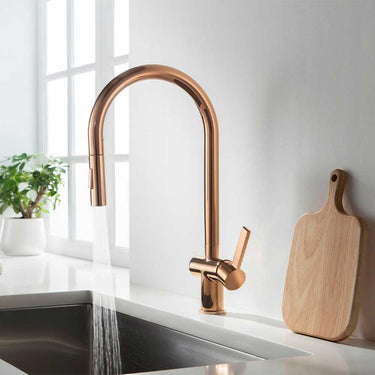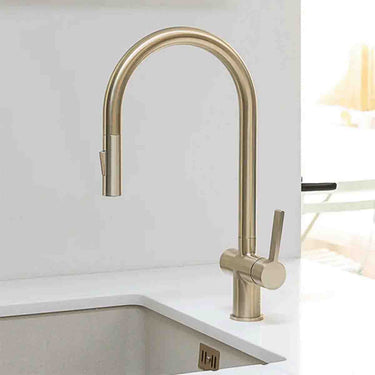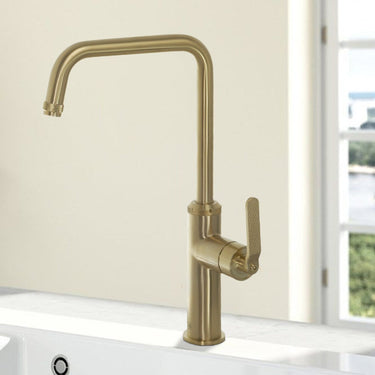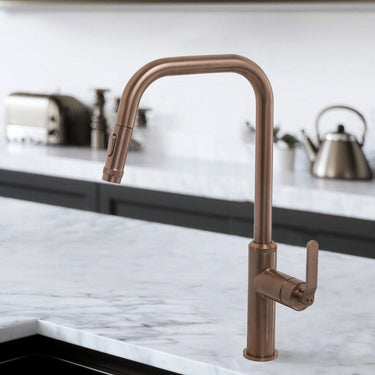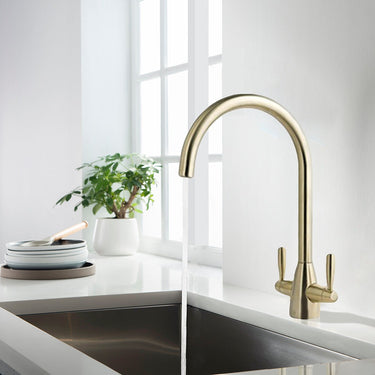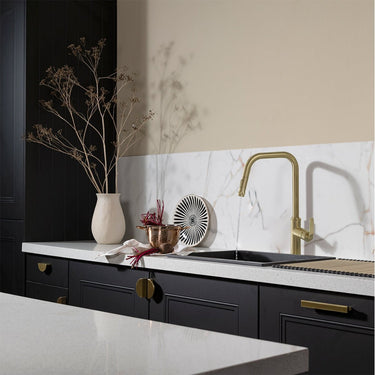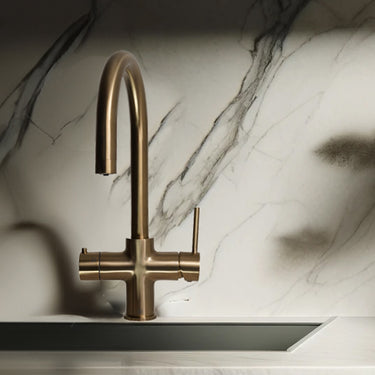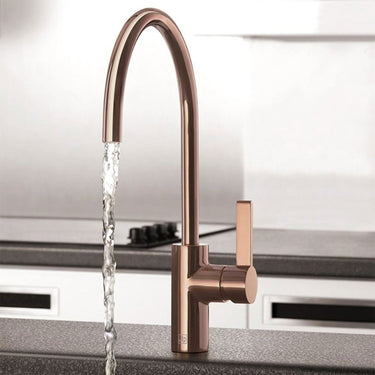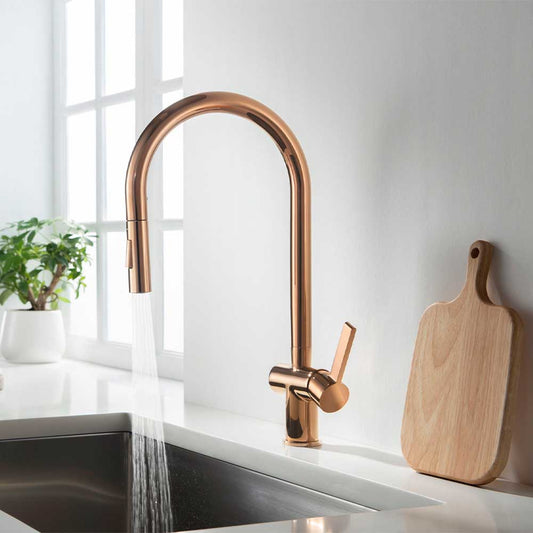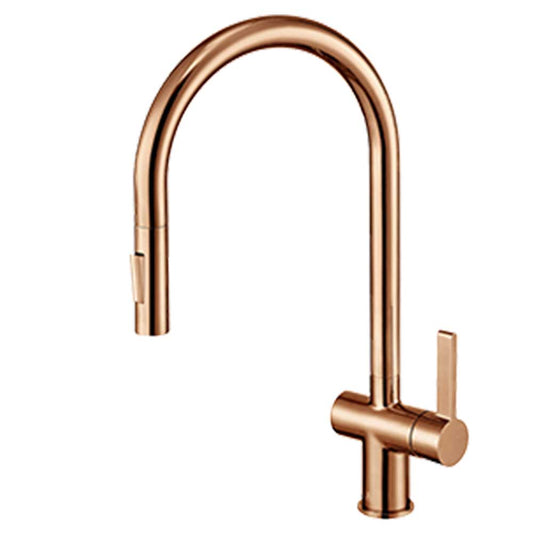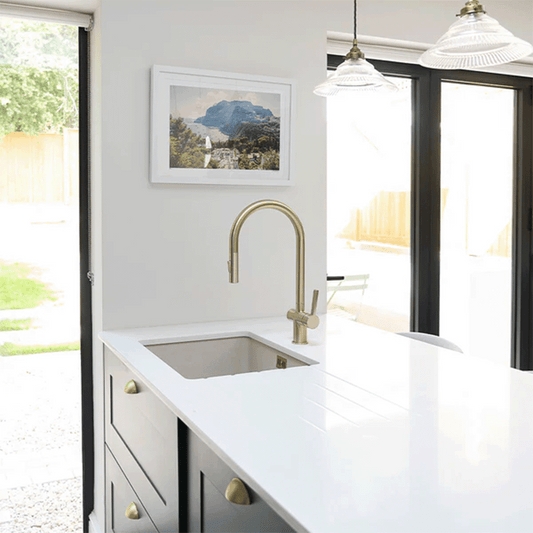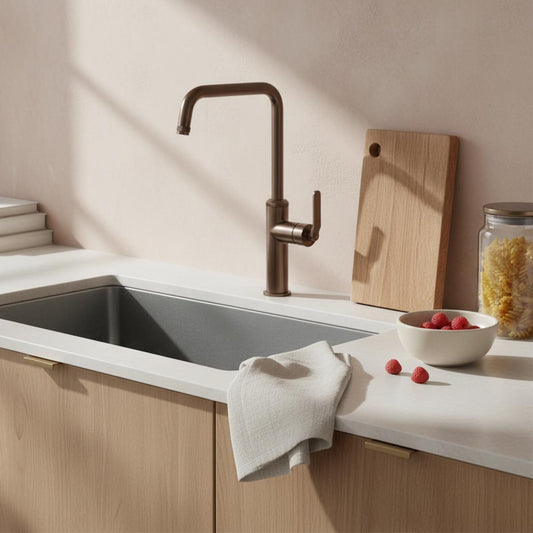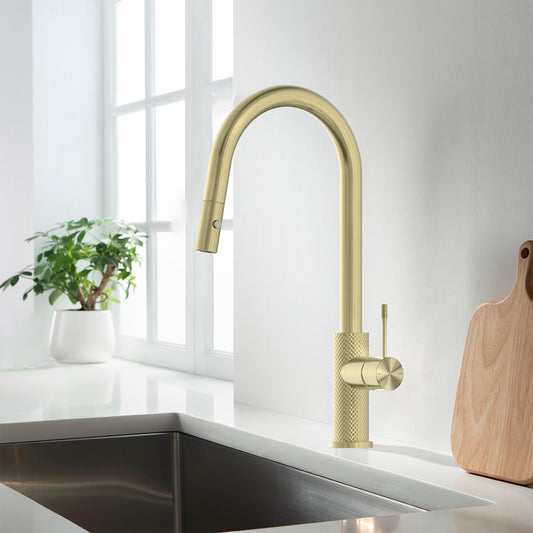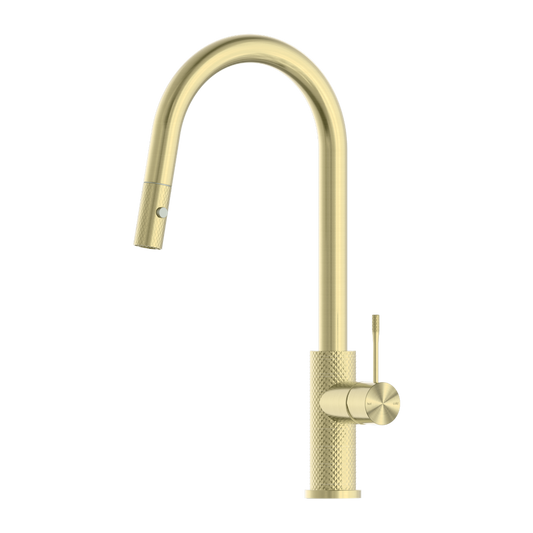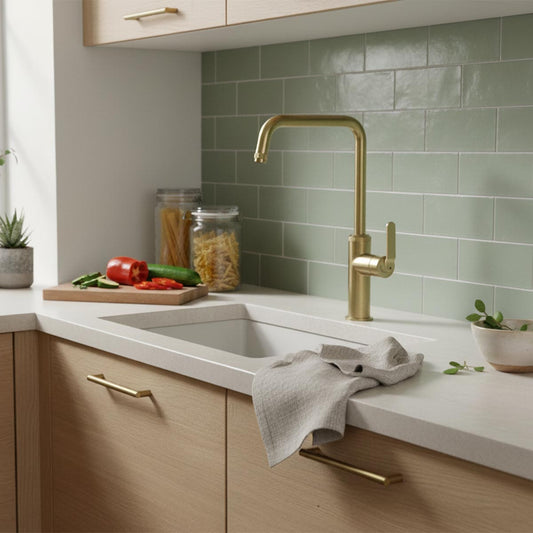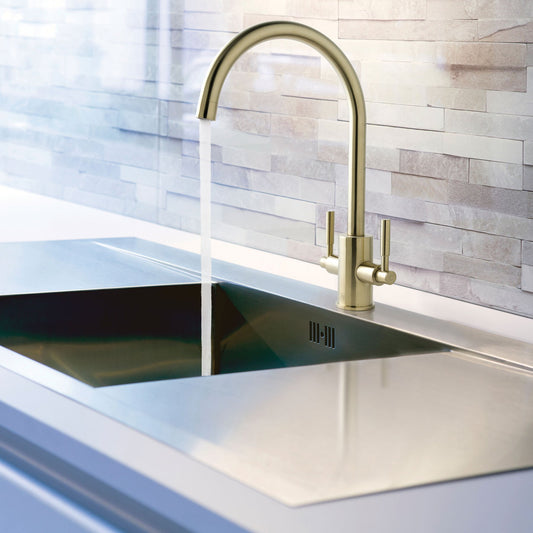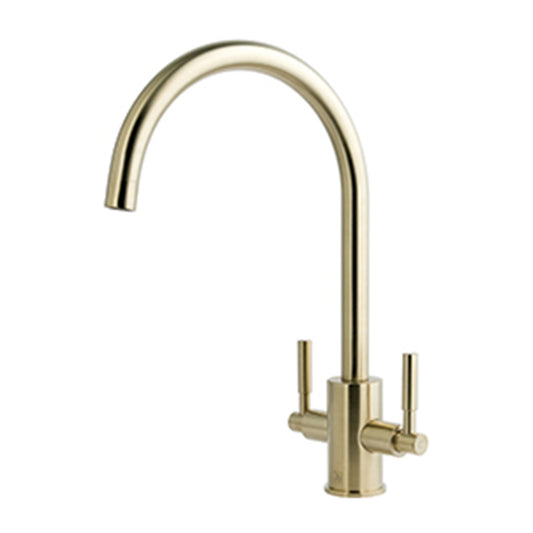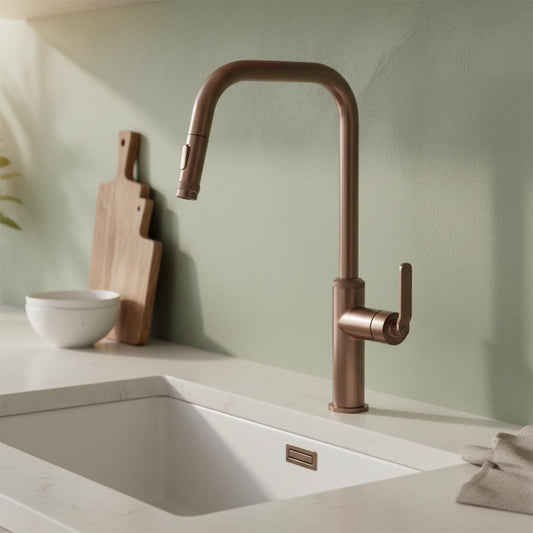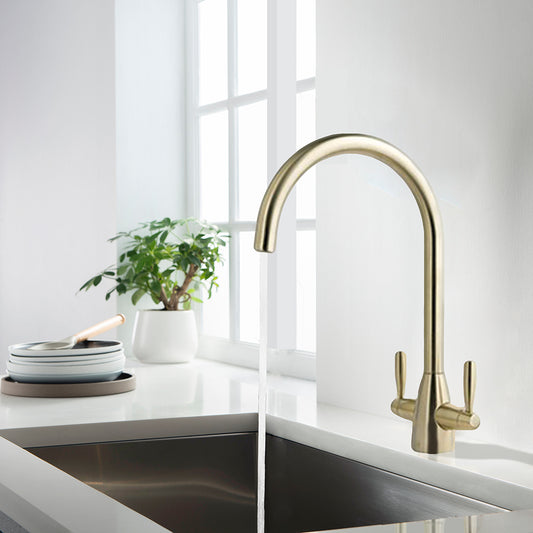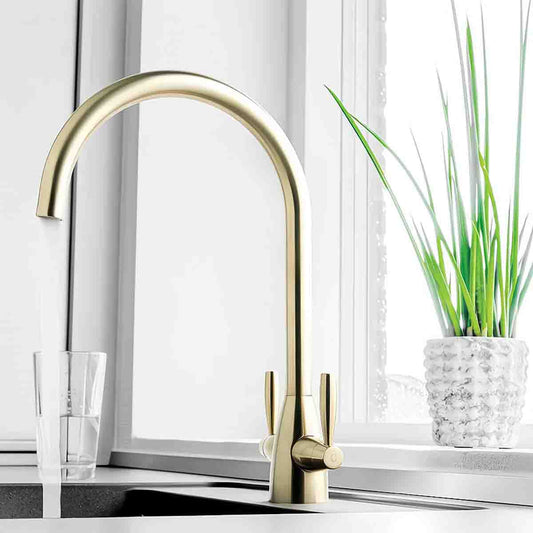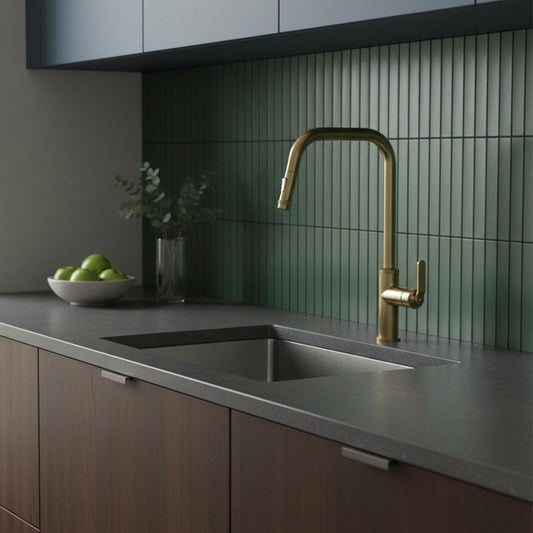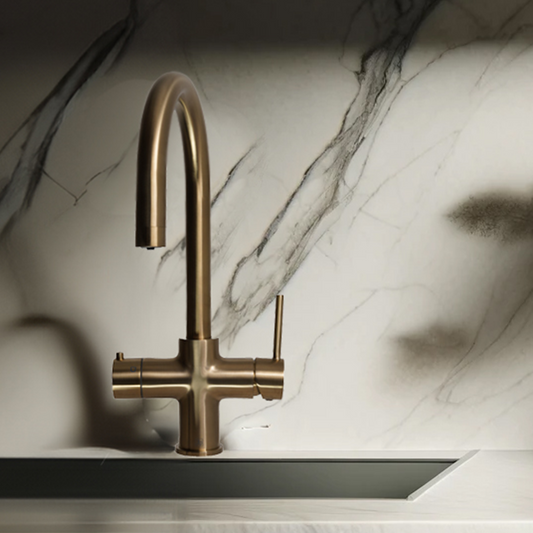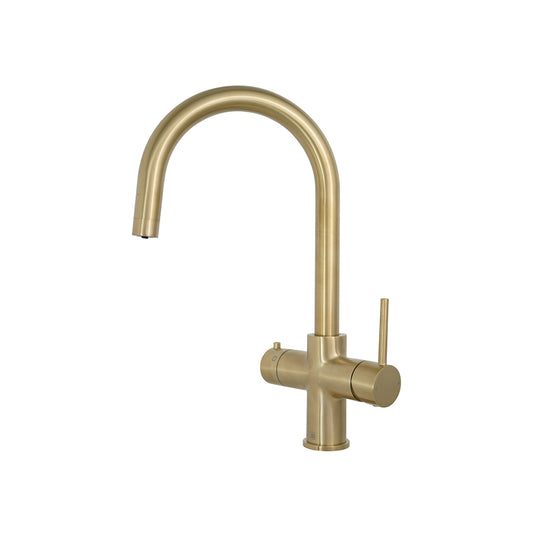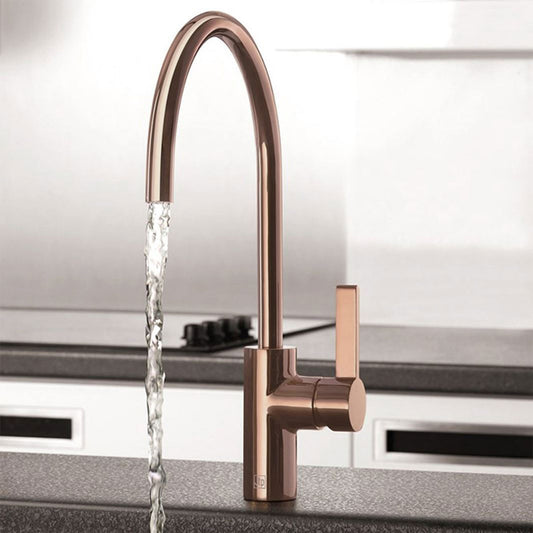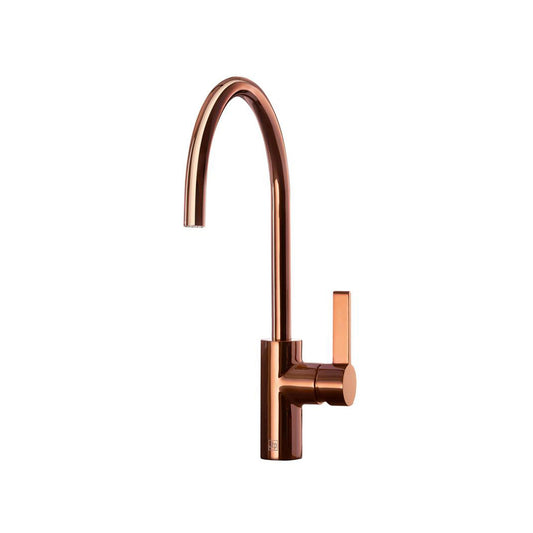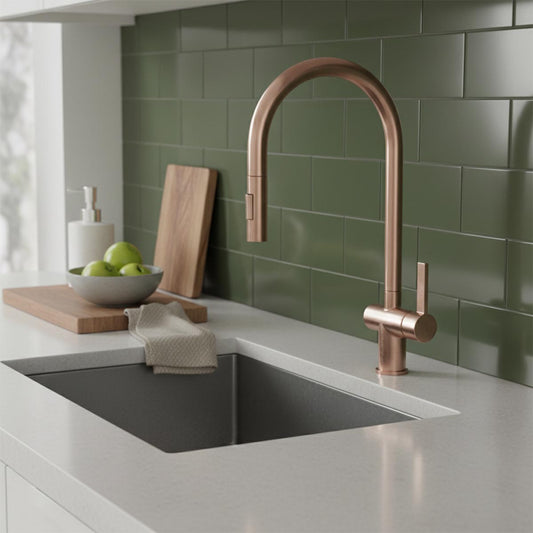Choice of Kitchen Mixer Taps Your Ultimate Guide to Style
Table Of Contents:
-
Kitchen Mixer Taps: How to Choose the Perfect Style for a Sleek Modern Look
→ -
Brass Kitchen Taps Collection
→ -
Introduction to Kitchen Mixer Taps
→ -
Styles and Designs of Kitchen Mixer Taps
→ -
Finishes and Materials
→ -
Functionality and Features
→ -
Design Trends
→ -
Installation Tips
→ -
Maintenance and Care
→ -
Choosing the Right Mixer Tap
→ -
Conclusion
→
Kitchen Mixer Taps: How to Choose the Perfect Style for a Sleek Modern Look
Choosing the right kitchen mixer tap can transform your kitchen from a mere workspace into a stylish and functional hub. With an array of styles, finishes, and features available, finding the perfect mixer tap requires a keen understanding of your kitchen’s needs and design preferences. This guide will walk you through the essentials of selecting kitchen mixer taps, from exploring design trends to installation tips, ensuring you make an informed choice that enhances both the aesthetic and functionality of your kitchen.
Introduction to Kitchen Mixer Taps
Kitchen mixer taps are more than just a fixture; they are pivotal to the functionality and design of your kitchen. These taps combine hot and cold water into one spout, allowing for precise temperature control and a streamlined appearance. Choosing the right kitchen mixer tap is crucial because it impacts not only the overall look of your kitchen but also how efficiently you perform daily tasks. A well-chosen tap can enhance your kitchen’s style, improve convenience, and complement your design scheme.
The benefits of selecting the right mixer tap are manifold. Functionally, a good mixer tap offers smooth operation, precise temperature control, and durability. From a stylistic perspective, the right tap can tie together your kitchen's theme, whether it be modern, traditional, or somewhere in between. Investing time in understanding the various options available will ensure you select a tap that meets both your practical needs and design preferences.
Styles and Designs of Kitchen Mixer Taps

Modern Taps:
Modern kitchen mixer taps epitomize sleekness and minimalism, which are hallmarks of contemporary design. These taps often feature smooth lines, geometric shapes, and a streamlined appearance that complements modern kitchen aesthetics. The design typically emphasizes simplicity and functionality, making use of innovative features such as touchless controls or built-in LED lights for added convenience. High-arc spouts are common in modern taps, allowing for ample clearance and easy use with large pots and pans. The modern tap's aesthetic often aligns with a broader trend towards clean, uncluttered spaces in home design, creating a cohesive look that enhances the overall kitchen environment.
In addition to their visual appeal, modern taps are designed for functionality. Single lever controls are typical, enabling users to adjust both temperature and water flow with ease. This simplicity can be particularly beneficial in a busy kitchen, where efficiency is key. Many modern taps are also equipped with pull-out or pull-down sprayers, providing additional versatility for tasks like rinsing dishes or cleaning the sink. These features not only contribute to the tap's sleek design but also improve its practicality in everyday kitchen use.
Vintage and Traditional Taps:
Vintage and traditional kitchen mixer taps both offer a sense of classic elegance and nostalgia, enhancing the charm of any kitchen with their timeless designs. Vintage taps are characterized by their retro elements, such as porcelain handles, antique brass finishes, and intricate patterns that evoke a nostalgic, old-world touch. These taps are perfect for complementing traditional or cottage-style decor and adding a historic charm to the kitchen. On the other hand, traditional taps exhibit classic elegance with features like ornate handles, decorative spouts, and detailed craftsmanship. Elements such as cross handles or lever controls with ceramic accents reflect a broad timeless beauty and sophistication, making them suitable for vintage or classical-themed kitchens.
Despite their historical aesthetics, both vintage and traditional taps are designed to blend classic looks with modern functionality. They typically include separate controls for hot and cold water, allowing for precise temperature adjustments. Constructed from durable materials such as brass or polished chrome, these taps ensure reliable performance and longevity. By combining historical charm with contemporary usability, both styles provide an attractive and functional option for those looking to infuse their kitchen with character and elegance while maintaining modern convenience.
Industrial Taps:
Industrial kitchen mixer taps are characterized by their robust, utilitarian design and raw, exposed materials. Inspired by the industrial revolution, these taps often feature metal finishes, visible pipework, and a no-frills aesthetic that conveys strength and durability. The design typically includes features such as large, lever-style handles and a high, angular spout, reflecting the practical, rugged nature of industrial design. Industrial taps are well-suited for kitchens with a modern or urban look, where they can serve as striking focal points.
Functionally, industrial taps are built to withstand heavy use and offer high performance. Many industrial designs incorporate features such as pull-out or pull-down sprayers, which enhance their versatility for tasks like cleaning and rinsing. The materials used, such as stainless steel or matte black finishes, contribute to the tap’s durability and ease of maintenance. Overall, industrial taps offer a blend of aesthetic appeal and practical functionality, making them an excellent choice for contemporary kitchens that embrace a bold, utilitarian style.
Finishes and Materials
Chrome:
Chrome finishes are a popular choice for kitchen mixer taps due to their bright, reflective surface and modern appeal. Chrome taps offer a sleek, polished look that complements a variety of kitchen styles, from contemporary to transitional. The reflective quality of chrome helps to enhance the overall brightness of the kitchen, making spaces appear more open and airy. Additionally, chrome is resistant to tarnishing and easy to clean, which helps maintain the tap’s pristine appearance over time.
The durability of chrome as a finish ensures that it can withstand daily use without showing signs of wear or corrosion. However, regular cleaning is necessary to keep the surface free from water spots and fingerprints. Using a non-abrasive cleaner and a soft cloth will help preserve the tap’s shine and prevent damage. Overall, chrome taps are a versatile and practical choice that offers both aesthetic appeal and ease of maintenance.
Brushed Nickel:
Brushed nickel finishes provide a matte, sophisticated look that is both stylish and practical. The brushed texture helps to hide fingerprints, water spots, and other marks, making it easier to keep the tap looking clean and new. Brushed nickel taps are versatile and can complement a wide range of kitchen styles, from modern to transitional. The understated elegance of brushed nickel fits well with various design themes, adding a subtle touch of refinement without being overly flashy.
One of the key benefits of brushed nickel is its durability and resistance to corrosion and tarnishing. This finish is designed to withstand the rigors of daily kitchen use while maintaining its appearance. Regular cleaning with a mild soap solution and a soft cloth will help prevent buildup and maintain the finish. Brushed nickel taps are an excellent choice for those seeking a blend of style, durability, and low-maintenance care.
Matte Black:
Matte black taps make a bold statement with their contemporary, striking appearance. This finish offers a modern, edgy look that contrasts sharply with lighter kitchen elements, creating a dramatic effect. Matte black is a versatile finish that works well in both modern and industrial-style kitchens, providing a sleek and sophisticated touch. The matte texture helps to minimize the appearance of fingerprints and water spots, which can be an advantage in high-use areas.
Maintaining matte black taps involves regular cleaning to prevent dust and smudges from accumulating. Use a soft cloth and gentle cleaning products to avoid scratching the surface. While matte black finishes are designed to be durable, they may show signs of wear over time, particularly in high-contact areas. Despite this, matte black taps offer a distinctive and stylish option for those looking to make a design statement in their kitchen.

Gold:
Gold finishes add a luxurious and opulent touch to kitchen designs, making them a popular choice for high-end renovations. Gold taps can range from bright, polished gold to more subdued, antique gold tones, offering a variety of aesthetic options. The rich appearance of gold enhances the overall elegance of the kitchen, making it a focal point in both modern and traditional settings.
Gold finishes require careful maintenance to preserve their appearance. Regular cleaning with a soft cloth and mild soap is essential to prevent tarnishing and maintain the finish’s luster. Avoid abrasive cleaners or harsh chemicals, as these can damage the gold surface. Gold taps can add a touch of sophistication and glamour to the kitchen, but they require diligent care to keep them looking their best.
Stainless Steel:
Stainless steel taps are renowned for their durability and modern appeal. The sleek, metallic finish complements a variety of kitchen styles, from contemporary to industrial. Stainless steel is highly resistant to rust, staining, and corrosion, making it an ideal choice for busy kitchens where durability is a priority. The material’s modern look and robustness ensure that the taps can withstand frequent use while maintaining their appearance.
To keep stainless steel taps in good condition, regular cleaning is necessary to prevent water spots and mineral deposits. Use a soft cloth and a non-abrasive cleaner to maintain the tap’s shine and avoid scratching the surface. Stainless steel taps offer a practical and stylish option that combines functionality with a sleek, modern aesthetic, making them a popular choice for contemporary kitchen designs.
Functionality and Features
Single Lever vs. Dual Lever
When choosing a kitchen mixer tap, one of the first considerations is whether to go for a single lever or dual lever design. Single lever taps offer a streamlined approach, where one handle controls both the temperature and water flow. This design is particularly user-friendly, as it allows for quick and intuitive adjustments. The simplicity of a single lever tap makes it ideal for busy kitchens where efficiency is key. Users can easily control the temperature and flow with one hand, which is especially convenient when multitasking.
On the other hand, dual lever taps feature separate handles for hot and cold water, providing precise control over the temperature. This setup is favored by those who prefer a more traditional approach and who value the ability to fine-tune the water temperature. Dual lever taps are often chosen for classic kitchen designs or for those who appreciate the tactile feedback of separate controls. While they may require more manual effort compared to single lever taps, they offer a level of precision that some users find advantageous.
Pull-Out and Pull-Down Sprayers
Pull-out and pull-down sprayers are integral features that add versatility to kitchen mixer taps. Pull-out sprayers extend from the faucet body and can be used to reach around the sink, making it easier to rinse dishes, wash vegetables, or clean the sink. This feature enhances the functionality of the tap by providing extra reach and flexibility, which is particularly useful in busy kitchens where efficiency is crucial.
Pull-down sprayers, on the other hand, are integrated into the tap and can be pulled downwards to provide a more concentrated spray. This design is favored for its powerful performance and ease of use, making it suitable for tasks that require a strong water flow, such as filling pots or washing large dishes. Both types of sprayers can significantly improve the overall functionality of your kitchen tap, providing convenience and versatility for various kitchen tasks.
High Arc vs. Low Arc
The height of the spout—whether high arc or low arc—plays a significant role in the functionality of a kitchen mixer tap. High arc taps feature a tall spout that offers ample clearance for filling large pots, cleaning big pans, or washing fruits and vegetables. This design is particularly useful for kitchens with deep sinks or where users frequently handle larger kitchenware. The high arc also provides a dramatic visual impact, often contributing to a modern or sophisticated look.
Low arc taps, in contrast, have a shorter spout that is more suited to smaller sinks or spaces where a more compact design is preferred. They are ideal for kitchens where a high arc might be impractical or where the sink is positioned under cabinets or shelves. Low arc taps tend to have a more understated appearance, which can be an advantage in kitchens with a more traditional or minimalist design. Choosing between high arc and low arc depends on your specific needs and the overall design of your kitchen.
Design Trends
Sleek and Minimalist
Sleek and minimalist design trends focus on simplicity and clean lines, and this approach is prevalent in modern kitchen mixer taps. Minimalist taps are characterized by their straightforward forms, often with a single lever and a streamlined spout. This design philosophy emphasizes functionality without unnecessary embellishments, making the tap a seamless part of the kitchen’s aesthetic. Sleek taps often feature finishes like chrome or brushed nickel, which enhance their modern appeal and contribute to a clutter-free look.
The minimalist trend aligns with contemporary kitchen designs that prioritize open spaces and unobtrusive fixtures. This style is favored for its elegance and its ability to complement a variety of kitchen layouts, from industrial to modern. Minimalist taps are not only visually appealing but also practical, offering ease of use and maintenance with their simple yet effective design.
Bold and Statement-Making
Bold and statement-making kitchen mixer taps are designed to stand out and become focal points in the kitchen. These taps often feature unique shapes, striking colors, or unusual finishes that draw attention. For example, a tap with a matte black or gold finish can serve as a dramatic contrast against a lighter sink or countertop, making it a standout element in the room. Statement taps are ideal for homeowners who want to infuse personality and character into their kitchen design.
This trend allows for creative expression and can be used to highlight a specific design theme or to create a visual anchor in the kitchen. Whether it’s a sculptural form or an eye-catching color, bold taps make a strong statement and can transform an otherwise ordinary kitchen into a visually dynamic space.
Retro and Classic
The retro and classic design trend brings a nostalgic charm to kitchen mixer taps, incorporating elements that evoke past eras while offering modern functionality. Retro taps often feature designs reminiscent of vintage fixtures, such as cross handles, traditional spouts, or ornate details. Classic taps, on the other hand, offer timeless elegance and can include features like porcelain handles or antique finishes.
This design trend is popular among homeowners who appreciate historical aesthetics and want to create a kitchen with a warm, inviting atmosphere. Retro and classic taps can complement traditional or vintage-inspired kitchens, adding a touch of elegance and nostalgia. They blend well with classic cabinetry and other vintage elements, ensuring that the tap not only performs well but also contributes to a cohesive and charming kitchen design.

Installation Tips
Compatibility with Sink and Plumbing Systems:
Before purchasing a kitchen mixer tap, it's crucial to ensure that it is compatible with your sink and existing plumbing system. Measure the diameter and spacing of the mounting holes on your sink to verify that the new tap will fit properly. Additionally, check the type of plumbing connections (e.g., compression, push-fit) to ensure that the tap’s connections match those of your current plumbing system. Some taps require specific configurations, so reviewing these details ahead of time helps avoid installation issues and ensures a seamless setup.
Steps for a Smooth Installation Process:
-
Preparation:
Start by gathering all necessary tools and materials, including wrenches, screwdrivers, plumber’s tape, and any specific parts required by the manufacturer. Shut off the water supply to avoid leaks and water damage during the installation process. -
Remove the Old Tap:
Unscrew and remove the old tap from the sink. It may be necessary to use a basin wrench or similar tool to reach the fittings under the sink. Carefully detach any connections to the water supply and remove the old tap assembly. -
Install the New Tap:
Position the new mixer tap in the mounting holes on the sink. Ensure that it is aligned correctly and insert the mounting bolts or nuts from underneath the sink to secure the tap in place. Tighten these bolts carefully to avoid over-tightening, which can damage the sink or tap. -
Connect Water Supply Lines:
Attach the water supply lines to the new tap. Use plumber’s tape on the threads to prevent leaks and ensure a secure connection. Tighten the connections with a wrench, but be cautious not to overtighten, which can cause damage. -
Check for Leaks and Test Functionality:
Turn on the water supply and check for leaks around the tap connections. Test the functionality of the tap, including both hot and cold water flow and any additional features such as sprayers or levers. Ensure everything operates smoothly and make any necessary adjustments.
If you’re unsure about any step in the installation process or if the tap requires a complex setup, consider hiring a professional plumber. Proper installation is key to the tap’s longevity and functionality.
Maintenance and Care
Regular Cleaning Practices:
To maintain the appearance and performance of your kitchen mixer tap, regular cleaning is essential. Use a soft, non-abrasive cloth and a mild cleaner to wipe down the tap regularly. Avoid harsh chemicals or abrasive scrubbers, as these can scratch the surface or damage the finish. For chrome or stainless steel taps, a mixture of water and vinegar can effectively remove water spots and grime. Ensure that all residues are rinsed off and the tap is dried with a clean cloth to prevent water spots and streaks.
Troubleshooting Common Issues:
-
Leaks:
Leaks are a common issue with kitchen taps and can be caused by worn-out washers, loose connections, or faulty cartridges. If you notice dripping or pooling water around the base, check the connections and tighten any loose fittings. If the issue persists, inspect the washers and cartridges and replace them if necessary. -
Low Water Pressure:
Low water pressure can be caused by clogged aerators or filters. Remove the aerator from the tap’s spout and clean it thoroughly to remove any debris or mineral deposits. Reinstall the aerator and check if the water pressure improves. If low pressure continues, there might be issues with the home’s plumbing system that require professional attention. -
Mineral Buildup:
In areas with hard water, mineral buildup can accumulate on the tap’s surface and inside the aerator. Regularly descaling the tap with a solution of vinegar and water can help prevent and remove these deposits. Soak the affected areas in the solution for a few minutes, then scrub gently with a soft brush or cloth.
By adhering to these maintenance practices and addressing issues promptly, you can ensure that your kitchen mixer tap remains in good working condition and retains its aesthetic appeal. Regular upkeep not only prolongs the life of the tap but also helps maintain the overall functionality of your kitchen.

Choosing the Right Mixer Tap
Selecting the perfect kitchen mixer tap involves more than just choosing a design that looks appealing. It requires careful consideration of several factors to ensure the tap meets both your aesthetic preferences and functional needs. Here’s a detailed guide to help you make the best choice for your kitchen:
Factors to Consider
Style and Design:
When choosing a kitchen mixer tap, the style and design should harmonize with the overall kitchen decor. The design theme of your kitchen, whether modern, traditional, industrial, or vintage, significantly influences the type of tap you select. A sleek, minimalist tap with clean lines might suit a contemporary kitchen, while a classic design with ornate details could be ideal for a traditional or rustic setting. It's essential to consider how the tap's style will blend with existing elements such as cabinetry, countertops, and appliances. The tap should complement the overall aesthetic while also standing out as a functional centerpiece.
Additionally, the tap's shape and design features play a critical role in its integration with your kitchen's style. Modern taps often feature geometric shapes and a streamlined appearance, which can enhance a contemporary kitchen's clean look. On the other hand, traditional taps might include decorative elements and lever handles that add a touch of elegance to a classic or vintage kitchen. By carefully selecting a tap that aligns with your kitchen’s design theme, you ensure that it not only performs well but also enhances the overall visual appeal of the space.
Functionality:
The functionality of a kitchen mixer tap is crucial for ensuring ease of use and efficiency in your daily kitchen tasks. Consider how you use your kitchen and what features will best support those activities. Single lever taps offer ease of operation by controlling both temperature and flow with a single handle, making them ideal for quick adjustments and convenience in busy kitchens. They are particularly useful for tasks that require frequent temperature changes, such as washing dishes or filling pots.
Dual lever taps, with separate controls for hot and cold water, provide precise temperature control, which can be advantageous for tasks requiring specific temperatures. Mixer taps, which combine hot and cold water through a single spout, offer versatility and ease in achieving the desired water temperature. Additionally, features like pull-out or pull-down sprayers add functionality by allowing greater flexibility in directing water flow, which can be especially useful for rinsing vegetables or cleaning the sink. Assessing the functional needs of your kitchen will help you choose a tap that enhances convenience and efficiency.
Color and Finish:
The color and finish of a kitchen mixer tap significantly impact the kitchen’s overall aesthetic. Different finishes such as chrome, brushed nickel, matte black, and gold offer varied looks and practical benefits. Chrome is a popular choice for its bright, reflective surface that complements a wide range of kitchen styles and is relatively easy to clean. It provides a classic and versatile look that fits well with both modern and traditional decor.
Brushed nickel offers a more subdued and modern appearance, with a matte finish that resists fingerprints and water spots, making it easier to maintain. Matte black taps create a bold, contemporary statement and can add a striking contrast to lighter kitchen elements. Gold finishes, while luxurious and sophisticated, add a touch of opulence and can be a dramatic focal point in a high-end kitchen. Selecting the right color and finish not only enhances the visual appeal but also ensures the tap complements the existing kitchen design and color scheme.
Cost Consideration:
Budget considerations play a significant role in selecting the right kitchen mixer tap. Kitchen taps come in a range of price points, from affordable options to high-end designer models. It's important to balance cost with quality to ensure you get a durable and well-functioning tap that meets your needs. While lower-priced taps may fit within a tight budget, investing in a higher-quality model can offer better performance, longevity, and aesthetic appeal.
Higher-end taps often come with additional features, superior materials, and more refined finishes, which can enhance both functionality and style. Consider the long-term value of the tap, including its durability, ease of maintenance, and compatibility with your kitchen design. By balancing your budget with the desired features and quality, you can find a tap that provides good value and enhances the overall kitchen experience.
Kitchen Design and Layout:
The compatibility of the tap with your kitchen’s design and layout is crucial for ensuring functionality and visual appeal. When choosing a tap, consider the dimensions and configuration of your sink and plumbing system. For example, if you have a deep or large sink, a high arc spout might be necessary to provide adequate clearance for washing large pots and pans. Conversely, a low arc spout may be suitable for smaller sinks or compact kitchen spaces.
The installation location also affects the choice of tap. If your kitchen has a compact layout, you might opt for a space-saving design or a wall-mounted tap to maximize counter space. Ensure the tap you select aligns with the existing plumbing and integrates seamlessly with your sink setup. By taking these factors into account, you can choose a tap that not only fits well within the kitchen's layout but also enhances both usability and design.
Importance of Matching Taps to Overall Kitchen Aesthetics
Choosing a kitchen mixer tap that matches the overall aesthetics of your kitchen is essential for creating a cohesive and well-designed space. The tap should not only function well but also enhance the visual appeal of the kitchen. A well-chosen tap will seamlessly integrate with the kitchen’s style, complementing other design elements such as cabinetry, countertops, and flooring. Whether you opt for a modern, classic, or industrial design, the tap should serve as a harmonious part of the overall decor. By selecting a tap that aligns with your kitchen’s theme and color scheme, you can create a visually pleasing and functional focal point in one of the most important areas of your home.
Conclusion
Choosing the right kitchen mixer tap is crucial for both the aesthetics and functionality of your kitchen. This decision influences how well your kitchen performs daily tasks and how cohesive the design looks. By carefully evaluating the various styles, materials, and features of kitchen mixer taps, you can select a model that perfectly aligns with your design preferences and practical needs. Modern taps offer sleek, minimalist designs that complement contemporary kitchens, while traditional and vintage styles can infuse a touch of classic elegance into your space. The choice of finish—whether chrome, brushed nickel, matte black, or gold—plays a significant role in harmonizing the tap with your kitchen's overall color scheme and décor.
Functionality is equally important, as features like pull-out sprayers and varying spout heights can greatly enhance your kitchen's usability. Ensuring compatibility with your sink and plumbing, and considering factors such as ease of installation and maintenance, will contribute to a smooth and efficient kitchen experience. By balancing style with practicality, you ensure that your kitchen mixer tap not only looks great but also performs reliably, enhancing your kitchen's efficiency and aesthetic appeal.









